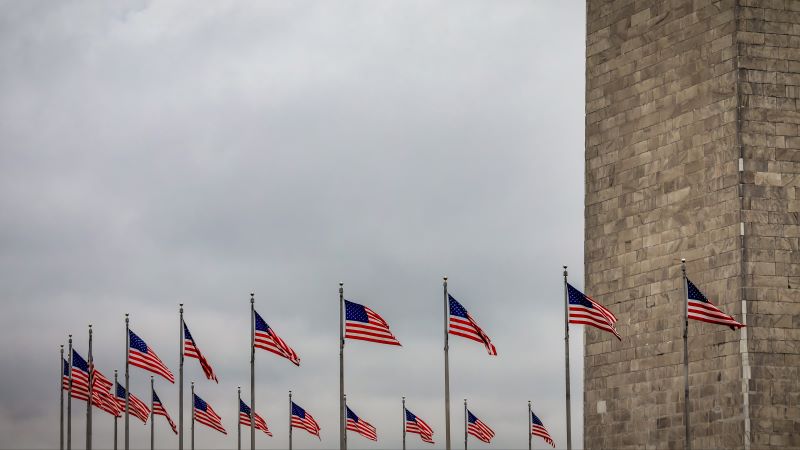Recommended
This piece is the seventh in the series “Episodes in the Life of an American, Woman, Development Economist.” Future episodes will be posted over the coming months.
To join the mailing list for future episodes, fill out this form or contact nancy'slife@cgdev.org.
The overarching theme of these episodes is the luck and privilege I’ve enjoyed—and my country has enjoyed—and the implications for my and my country’s responsibilities to the rest of the world. I was lucky to be born in America White and well-off; was lucky again as a baby boomer to enjoy the reproductive rights every female in the world should have; and was lucky to benefit from the “exorbitant” privilege of a top appointment at the Inter-American Development Bank.
I’ve also worked hard and been ambitious, of course, about having both a family and a career.
A good example of my good luck is that in 1975 I got into the PhD program in economics at Yale against all odds, without having taken any economics or math in college—without even high school calculus (it was not offered at the small Catholic girls’ high school I attended). Now and then as well, competence in math is considered the sine qua non for studying and doing economics. And while in retrospect the admissions committee made a good decision, the reality is that there were surely dozens of other equally attractive candidates.
A good example of my “privilege” is that at age 29 and divorced with a two-year-old daughter, I did not have to worry about the cost of returning to school for four years. I could give up a good job and move (from Washington, DC to New Haven, Connecticut). How? I already owned one-half of the house I lived in, my ex-husband owning the other half. My widowed mother, the beneficiary of my father’s successful career as a New York lawyer, gave me the money to buy out my accommodating ex-husband (her idea); that meant I could rent out the house and cover a good part of my living expenses as a student. I was a classic beneficiary of the wealth gap in the US between Whites and Blacks, a gap (in 2016 of ten to one for similar household income) that has built up over generations, associated closely with the barriers to Blacks’ home ownership.[1]
So immense privilege—born well-off and White in America—made it possible for me to pick up and go to Yale. Here is the macro and then the micro story behind my Yale PhD.
My Yale luck: The macro story
As an early baby boomer, I entered adulthood at the conjunction of three phenomena of the late 1960s and early 1970s: the growing availability and adoption by women of the contraceptive pill, starting in the late 1960s;[2] a tight labor market; (as today), with high demand for relatively scarce college-educated women;[3] and the women’s liberation movement, which took root in the late 1960s and gathered steam throughout the 1970s, and which gave me a sense of agency about shaping my own future I might not otherwise have had.
These three phenomena were not independent events. The first graph belowshows the dramatic increase in the proportion of college-educated women using the pill in successive postwar birth cohorts. Note the steep increase in use by age 21 for women in my cohort, born in the late 1940s/early 1950s (for whom the curve is steepest)—from less than 10 percent for those born in 1940 (pre-postwar baby boom), to more than 30 percent for those born in 1952.
From The Power of the Pill, Claudia Goldin and Lawrence F. Katz, 2002[4]
The second graph shows, with a curve of the same shape, an equally dramatic increase from 5 to 30 percent in the proportion of college-educated women entering law and medical schools in the 1970s, the equivalent period for my birth cohort; the same increases occurred in college-educated women entering business and dental schools (not shown). These were women, like me, who took on the costs of additional schooling once they were liberated from the fear of an unintended pregnancy interrupting their professional training. They were empowered by the “power of the pill”—the title of the paper with these graphs.[5]
From The Power of the Pill, Claudia Goldin and Lawrence F. Katz
What does my good-luck baby boomer timing have to do with my wanting to get a PhD in 1975, at age 30 as a single mother with no economics or math under my belt?
First, though I didn’t think of it at the time, I had become professionally ambitious. The women’s “lib” movement had come home to my house. It helped that by then I was divorced (provoked by, yes, different views of the wife’s and husband’s roles—for a future episode), which made it easier to take charge of my own future as college-educated men always have, married or not.[6]
Second, in 1973, four years after receiving a Master’s degree in international affairs, I got my first good job, as a “policy analyst” in a USAID-funded program to support social scientists in the developing world working on population issues (with a windowed office!). There I had a mentor, William (Bill) McGreevey, an accomplished senior colleague with a PhD in economics. Thanks to him I had the time and the incentives on the job to read, learn, and write about the economics of fertility and the family.[7] I got especially interested in fertility and female employment. I still remember learning that women’s work had no effect in reducing fertility during the pre-factory age of industrialization in 19th century England, because women found a way to do “home” work—cooking, cleaning, and taking care of children—while also doing remunerative piecework, in those days at the spinning wheel or the sewing machine.[8] Something similar exists in agricultural economies today; in developing countries rural women are usually responsible for both a home-based food garden and for tending to children. During the pandemic, the hidden pressures on women of that combination became obvious in advanced economies. Women in high-income countries work about a half hour more each day than men and perform almost twice as much unpaid work. In low-income countries, women work over an hour more than their male peers in the typical day, and much more of the work they do is unpaid, as they do nearly three times as much domestic work as men.[9]
Moreover, in the field of population studies, what economists were saying and writing about at the time was grounded in theory (of family behavior, for example), using analysis of household survey data from developing countries as a guide for better public policy. This combination was new and appealing to me—and different from my naïve view of economics as mostly about “macro” – inflation, interest rates, currency values, and productivity.
And I saw on the job that to do that kind of work (and sit with the scholars and experts at the conference table—virtually all of them men—not in the chairs behind the table with the program aides and research assistants), I would need both the training and the credential a PhD promised.
Of course, it mattered that I didn’t need to worry about money. In the end, I not only benefitted from my mother’s gift. Once I took the leap to return to school, the two-plus years in that good job meant I had professional contacts that brought opportunities for good summer jobs (one at the World Bank) and good consulting gigs during the winter and spring holidays.
That’s the “macro,” big picture part of the Yale story.
My Yale luck: A micro story
I applied to three programs; Yale, with its distinguished faculty in development economics including several whose names I knew well that were working on population issues; the University of Maryland, with its excellent reputation in economics; and the University of Michigan, with one of the country’s finest programs in population studies combined with economics, and where several faculty would know my name from meeting me at those conferences sponsored by my employer, which might help get me accepted.
Maryland made great sense. I would not need to move away from Washington, where my daughter’s father lived just a few blocks from me. Going to Michigan would require a daunting move. Yale was a big stretch but had a big advantage for me personally. Both of my 2-year-old daughter’s grandmothers lived in the New York suburbs and in the unlikely event I did get in, they would be my childcare weekend safety net.[10] Yale was familiar to me; I’d been to New Haven, had visited during college in nearby Boston, and my sister had gone there (graduating in the first class to which women were admitted.)
What happened? First, the University of Maryland turned me down, which was hugely discouraging. I thought Maryland was my best shot. Then, within a week or two, I was admitted to Michigan, with a full ride—a relief to get in and with tuition and a stipend. But Michigan meant a big move away from my daughter’s father, and those grandmothers.
Then, surprisingly, amazingly, I got into Yale. I was delighted to get in, but also, frankly, mystified that I did.
I didn’t get any financial support; maybe I was viewed as a risk. But as readers know my mother helped make sure I’d go to close-by Yale, not far-away Michigan.
In my second week in New Haven (in the fall of 1975), I got talking on the “econ” block of Hillhouse Ave. in New Haven with Mary Ann Baily, one of the just two tenure-track female faculty teaching in the economics department at the time. Somehow, I was explaining to Professor Baily why I wasn’t taking the standard micro and macro theory courses with the other first-year graduate students—that I was putting off theory until the second year in order to take effective prerequisites in my first year, including undergrad calculus.
“A-ha” is what I remember her saying. She had been on the admissions committee and remembered my application(!). I was an unusual applicant. I got the sense she just might have championed or at least “sponsored” my application.[11]
It turns out that she had joined the Yale faculty in the fall of 1973 and in her second year of teaching was on the admissions committee for the class of 1975 –just in time, perhaps, to help me get admitted.
Dr. Baily’s resume indicates she graduated from Harvard College in 1964 with a BA in mathematics, three years before I finished college. She received an MA in economics in 1968 and then a Ph.D. from MIT in economics in 1974; she and her husband had spent a year in Nairobi (1971-72), where she did research for her Ph.D. thesis as a fellow at the Institute for Development Studies. As in my case, her progress toward the PhD did not follow a steady four-year trajectory from a BA to a PhD, which in the 1970s was the norm for most American students.
Did she see in my application something of her own experience—perhaps the Africa/Kenya connection, perhaps the interest in public policy (she is a health economist who works on ethics issues), perhaps the common experience of navigating the personal and social obstacles, even with a Harvard BA in mathematics, to the usual path of male math graduates moving straight into a PhD program in economics?
One way or another, she finished her PhD and joined the Yale faculty just in time for me. She became an economist with a faculty appointment at Yale on her own—ahead of the conjunction of the “power of the pill” and the women’s movement that emboldened me to apply to a PhD program. She was among the small female pioneers who were on the faculty at top economics departments in the early 1970s, in time to pry open the doors wider for baby boomers like me. Madeleine Albright used to say there’s a special place in hell for women who don’t help other women. I say there’s a special place in heaven for women like Mary Ann Baily (whether she really helped or not) who do help women—in many cases just by their quiet example.
And so it was, almost as in a fairy tale, that I rode the wave of the women’s liberation movement, triggered in part by the power of the pill, and received a Yale PhD in economics, with help from my mother, and, perhaps, because there was a new female faculty member “in the room” when the admissions committee met.
This is an updated version of the original post of November 18, 2022, reflecting clarifications from Dr. Mary Ann Baily about her experience.
Comments welcome.
Find me on Twitter: @nancymbirdsall
[1] In each quintile of income in the US, the White to Black ratio of median net worth in 2016 was, “at least, about ten to one”. See William Darity, “Position and Possessions: Stratification Economics and Intergroup Inequality”, Journal of Economic Literature, June,2022, p. 419. He cites other authors’ work on a resulting dynastic model of perpetual concentration of wealth.
[2] It was only in the mid to late 1960s that the science behind the pill made it acceptable for most women. Many further refinements have reduced the dosage and side effects greatly since then. The pill was a positive exogenous shock to the system for women (as economists would say), made famous in the expression “the power of the pill,” on which more below.
[3] I started my first post-college (and MA in international affairs) degree job in 1969. It was an ideal time for me and other college-educated baby boomer women. The unemployment rate in the US was then roughly 3.5 percent; it would not be as low again for 40 years, until 2019; and in 1969, only 11 percent of working women were college educated, compared to 42 percent in 2016; the demand for college-educated workers of either sex exceeded the supply.
[4] Goldin, C., & Katz, L. (2002). “The power of the pill: Oral contraceptives and women's career and marriage decisions.” Journal of Political Economy 110(4): 730-770.
[5] It is possible that admissions committees of professional schools were less likely to accept females for fear that an initial investment in them would be lost if they failed to complete their training because of an unintended pregnancy. I know of no study assessing that possibility.
[6] The exception for men came during the same period of the 1960s and early 1970s when the Vietnam draft gave them a taste of the psychological and real barriers women had traditionally faced in planning for future careers.
[7] For readers with training in economics, and/or who know the feminist literature in economic, this was in 1973, the age of Becker. See Episode 2.
[8] Nowadays, thanks to the COVID pandemic, we at least recognize the pressures that combination imposes on working women. The burden is as great or greater for women in low and low-middle income countries. See literature review by O’Donnell et.al. here.
[9] Data on unpaid work has been lacking for decades. A special initiative of Data2X in partnership with the ILO and the World Bank, is focused on ensuring an expanded definition of work to include unpaid work at home.
[10] Imagine how this works for mothers from developing countries, for whom the entire process of going abroad for graduate study entails not just the high costs (applying, taking the GREs, for some a test of English competence); getting a student visa, no small matter in itself; and beyond the additional barriers – including the uncertainty of living abroad, and for study in the US, of childcare in the desert-like US childcare non-system.
[11] I had the chance to talk to Mary Ann Baily; she remembers I was an unusual applicant, with policy experience and some publications. But she says “championed” or “sponsored” is wording that is too strong- that what really matters, as in many other settings, is to have a “woman in the room,” not only to “keep an unfair thing from happening, but to speak up if just being there doesn’t work. On the need to speak up she referred to her experience on the faculty hiring committee the year before.
Rights & Permissions
You may use and disseminate CGD’s publications under these conditions.





